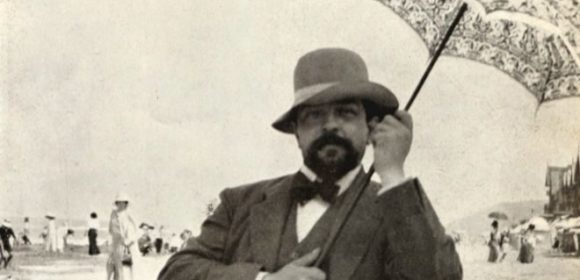This lovely work, which Debussy composed in 1904, had its genesis in a rivalry between two harp makers. Sebastian Erard had perfected the pedal harp early in the 19th century. Pedal harps use foot pedals to raise or lower the pitch of a harp’s strings, and have become the standard instrument played by harpists. However, seeking to improve upon this design, in 1894 Gustave Lyon of the Pleyel firm invented a “chromatic” harp, an instrument with strings for every half step (similar to the white and black keys on a piano).
To publicize his new instrument, the Pleyel company commissioned Debussy to write a piece showcasing the abilities of the chromatic harp. This turned out to be his 2-movement Danses Sacrée et Profane for harp and strings, which he dedicated to Gustave Lyon. While the chromatic harp is now mostly relegated to museums, fortunately this work can also be played on pedal harp, and it has become a beloved mainstay of the harp repertoire.
The first, “sacred,” dance begins in a slow and stately mood set by unison strings, joined by the harp in an uplifting reverie, with numerous ascending and descending chromatic passages. The “secular” dance, which follows without a break, is in the form of a lilting waltz, with various statements of the main theme traded back and forth between the harp and strings. Towards the end of the piece, a short introspective reverie makes its appearance. The waltz then resumes at a joyous pace, followed by a majestic and sonorous ending.
Danses Sacrée et Profane for Harp and strings
For Harp and strings
Composed in 1904
By Claude Debussy






